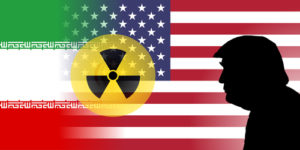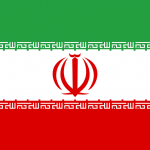Iran, the Gulf of Oman and the US False Flag Predilection

As two oil tankers were evacuated after being attacked in the Gulf of Oman on 13 June, the Trump administration was quick to accuse Iran of using magnetic mines to disable the Norwegian and Japanese-owned oil ships.
US Central Command released footage that appears to have been taken from an aircraft, which it claims shows an Iranian patrol boat removing an unexploded limpet mine from the side of the Japanese tanker. Tehran has denied any involvement in the attacks.
The president of the Japanese shipping company that owns the Kokuka Courageous tanker said crew members reported being hit by “a flying object”, rather than a mine. While Taiwanese company CBC Corp outlined that it suspected the Norwegian ship it charted had been “hit by a torpedo”.
The incident comes a month after a similar attack took place in the Persian Gulf. On 12 May, four tankers were attacked using limpet mines off the coast of the United Arab Emirates. The UAE, Saudi Arabia and Norway blamed a “state actor” for the attacks, but didn’t name any specific nation.
Despite the video the US asserts shows Iran in the act, EU foreign ministers said on Monday that they’re looking for more evidence as to who’s behind the attacks, which could be a nod to the fact that the US has a checkered history of throwing up false flags to justify entering wars.
Deception in Vietnam
As news of the Gulf of Oman incident hit, the Twittersphere erupted with reminders of the 1964 Gulf of Tolkin incident that led to the US entering the Vietnam War. This was an incident shown to be a false flag: a covert political or military operation designed to deceive.
Edward S Herman and Noam Chomsky documented the falsehood behind the Tonkin incident in 1988’s Manufacturing Consent. The scholars outlined that in mid-1964 both North and South Vietnam wanted to negotiate a political settlement.
But, this option didn’t suit the US, which at the time wasn’t directly involved in the conflict. It sought to expand the war in the south into the country’s north. And on 4 August 1964, the US destroyer Maddox re-entered the Gulf of Tonkin, accompanied by the destroyer Turner Joy.
On the day prior, the Maddox had been in these same North Vietnamese waters and defeated three of their patrol boats that had fired warning shots. While on the 4th, the Maddox captain radioed Washington to report on “very doubtful” information about a possible attack that day.
However, on the following day, despite no real attack, US president Lyndon Johnson decried North Vietnam’s “open aggression” in the gulf and ordered US planes to bomb their installations. And a subsequent congress resolution was the impetus for the US escalating its involvement in the war.
Mounting accusations
Taliban spokesperson Zabiullah Mujahid publicly claimed that his military organisation was responsible for a suicide bomb attack on a US convoy in eastern Kabul on 31 May this year, soon after the incident had occurred.
But, last Thursday, as US secretary of state Mike Pompeo announced that Iran was responsible for the Gulf of Oman incident, he also asserted that the nation was behind the attack in eastern Kabul. And he further listed a number of other “unprovoked attacks” without any related proof.
Indeed, the Trump administration has been provoking tensions with Iran since it pulled out of the 2015 Iran nuclear deal in May last year. The agreement had seen the Middle Eastern nation scale back its nuclear program in exchange for the lifting of sanctions, which the US has now reimposed.
Iranian Atomic Energy Organisation spokesperson Behrouz Kamalvandi said on Monday that his nation will step up its nuclear program in 10 days, unless new terms are set for the agreement. Iran’s economy has been in free fall since the US pull out, which has led to significant cuts in oil sales.
Elusive weapons of mass destruction
There are a number of false flag theories involving incidents that led to US involvement in conflicts. It’s been posited that the British cruise liner RMS Lusitania was deliberately steered into enemy waters to provoke its 1915 sinking by the Germans, in order to drag the US into the Great War.
But, as Lawrence Wilkerson, the former chief of staff to US secretary of state Colin Powell, reminded The Intercept this week, the most recent example of the American public being dragged into a war on false premises is the 2003 war with Iraq.
Mr Wilkerson explained that he had doubts about the evidence around Iraqi weapons of mass destruction at the time they were floated. And he went on to say that although the connecting of Saddam Hussein and al Qaeda was absurd, it was something that resonated with the US public.
And as for the Gulf of Oman incident, Wilkerson said, “I see it as either a tactical tit for tat by Iran, if in fact, Iran had any hand in any of this at all.” And he added that the US has provoked Iran to the “maximum”, and if it was him, he’d do something to show he couldn’t be provoked that far.
One step closer
Iranian forces shot down a US surveillance drone in the early hours of Thursday morning. Tehran said the pilotless aircraft that took off in the UAE had violated its airspace some eight miles from its coast, whereas Washington claims it was an “unprovoked attack” over international waters.
Following the downing of the high-altitude drone, president Donald Trump approved strikes against Iran in retaliation, but pulled back on them on Thursday night. The operation was already in its early stages when it was called off, with planes and ships in position.
It’s not clear as to why Washington called the attacks to a halt at the last minute. But, what does seem certain is that the Trump administration believes that it would be to its advantage to engage in yet another US provoked war prior to its second attempt at an election win next year.







